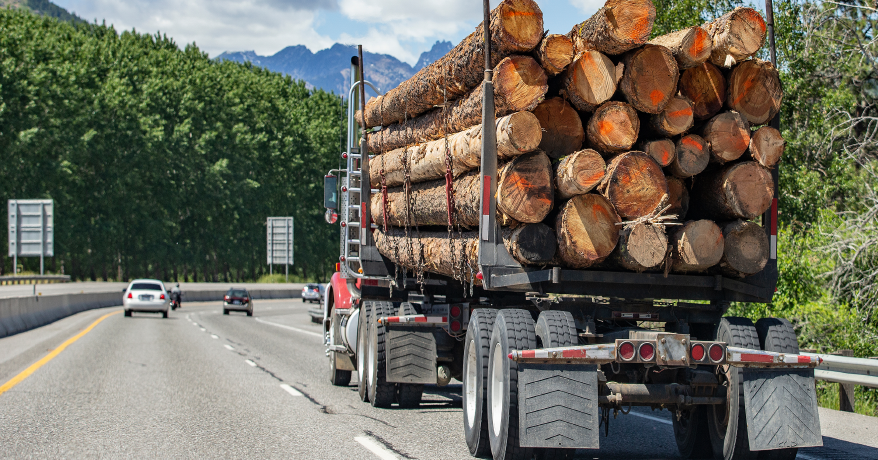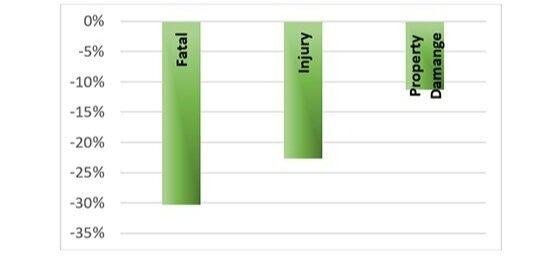LATEST NEWS
Safe Routes Act, H.R. 2213 of 2021
“Great Lakes Timber Professionals Association (GLTPA) commends Congressman Gallagher for his persistence to create a safer environment for local communities and truck drivers with the re-introduction of the “Safe Routes Act, H.R. 2213” of 2021,” stated GLTPA President Matt Jensen.
“The “Safe Routes Act, H.R. 2213” of 2021 provides drivers of product specific, specialized log trucks a choice of routes by allowing them access to the interstate highway system when available,” he continued. When passed by Congress, the “Safe Routes Act, H.R. 2213” will allow drivers of state weight compliant log trucks the option of avoiding urban streets and highways where pedestrian activity is ongoing all hours of the day.
Log truck drivers throughout the nation are restricted, under certain conditions, from utilizing the interstate highway systems designed to transport heavy military equipment. This restriction forces drivers to travel on city, town, and rural haul routes. Being forced to secondary haul routes increases truck driver exposure to automobiles, bicyclists, and pedestrians. In addition to increased pedestrian exposure, driver hours of service are increased adding to driver fatigue which is something concerned safety groups say they would like to see lessened for drivers.
In addition to reducing driver hours and fatigue, the “Safe Routes Act, H.R. 2213” also reduces the number of “Vehicle Miles Traveled (VMT)”. VMT is a measurement used to determine the number of projected accidents based on the number of vehicle miles traveled within a given time frame. Interstate routes are typically shorter and more efficient than secondary routes. As such, fewer miles traveled results in fewer projected accidents which is promoted by industry and safety advocates alike.
“The “Safe Routes Act, H.R. 2213” of 2021 is simplistic legislation which will have an enormous positive impact on safety for both pedestrians and log truck drivers nationwide,” said Henry Schienebeck, GLTPA Executive Director. In addition to added safety, local routes will see a decrease in traffic which could lead to increased road life. Along with all the states who are members of the American Loggers Council and Forest Resources Association, Great Lakes Timber Professionals Association fully supports this narrowly focused yet meaningful safety legislation.
Source: Henry Schienebeck, Executive Director, Great Lakes Timber Professionals Association
- Ponsse
- Rebate
- PATHH Program
- forest management
- John Deere
- Logger Legislation
- Komatsu
- Western Star
- USDA
- Log-a-load-for-kids
- Career
- Logging Equipment
- Workforce Development
- Team Safe Trucking
- carbon credit scam
- Biomass
- Wood Products
- Tigercat
- COVID-19
- Wildfire
- Innovation
- Inflation
- Ponsee
- Barko
- Paper Mill
- Wallingford
- as we see it
- Peterbilt
- Safe Routes
Logging Truck Proposal Would Make Roads Safer And Decrease Emissions, Advocates Say
The drivers of logging trucks have to navigate school zones, tight intersections and small-town traffic because federal law prohibits them from driving on interstate highways. A new bill from a Wisconsin congressman would change that.
Research suggests the federal weight limit on interstates makes logging truckers' routes more dangerous, costs timber companies money and leads to more greenhouse gas emissions. They'd use less fuel, make more efficient routes and encounter fewer obstacles on interstates.
U.S. Rep. Mike Gallagher, R-Green Bay, said his bill would change what he calls "outdated" regulations. The measure has the support of Wisconsin's timber industry and it's bolstered by new research documenting the inefficiencies and potential dangers of barring the trucks from highways.
Every morning at 6 a.m., Scott Koerner, of Oshkosh's Koerner Forest Products, maps routes with his drivers.
"Very often, we say, 'Boy, if we could just jump on the interstate, this would be quite an easy run,'" Koerner said. "Sometimes, we're paralleling that piece of interstate for 60, 70, 80 miles on county roads and state highways, just trying to keep the route still as short as we can."
In particular, he said the routes that require drivers to pass through school zones are a stressor.
Gallagher said his eyes were opened to the issue when he did a ride-along with a logger in late 2019 and witnessed them navigating the massive vehicles through roundabouts and busy intersections seemingly not designed for them.
"They're very skilled drivers," Gallagher said. "But it makes no sense why we seem to make their trip from Point A to Point B almost as challenging as we can."
Recent research supports the point. Forest resources professors with the University of Minnesota studying timber routes in central and eastern Wisconsin found interstate travel would reduce the time they take by more than 20 percent, would reduce fuel consumption by between 6 percent and 14 percent and would eliminate school zones from the routes.
The biggest difference lies in the vast reduction in the number of intersections and traffic lights the truckers would encounter on interstates. Researchers found they would be down between 64 percent and 88 percent. The findings echoed similar research out of the University of Georgia.
Source: By Rob Mentzer — WPR.ORG
Changing Highway Truck Weight Limits Can Be Safer for Everyone
Truck weight limits are a frequent topic of policy debates in the forest industry. All too often, the discussion is devoid of facts and analysis and full of emotional appeals. The industry asserts that moving loaded trucks onto the Interstate Highway System will be safer and more efficient. At the same time, some safety advocates counter that heavy trucks on the highway must pose a danger.
Fortunately, there is data to help us understand what changing truck weights can do for road safety. Section 194 of the Consolidated Appropriations Act of 2010 (Public Law (P.L.) 111-117) directed the Secretary of Transportation to study the impacts of the Maine and Vermont truck pilot programs, which replace federal commercial-vehicle weight regulations with state limits on interstate highways in those states. In Maine, that means allowing trucks up to 100,000 pounds gross vehicle weight on six axles onto the federal highway. In Vermont, the federal highways matched state limits of a maximum gross vehicle weight of 99,000 pounds on six axles.
It has been over a decade since that legislation passed, and we can see that roads have gotten safer. Analyzing all accidents involving medium and heavy weight trucks statewide in Maine, we see that the average number of fatal, injury-causing, and property-damage causing accidents decreased when looking at the years before heavier trucks were allowed on the highway (2005-2009iii) and for the years following (2011-2020iv).
Accidents Involving Medium and Heavy Weight (>10,000 lbs.) Trucks, Statewide (Maine)
Change in Maine Statewide Truck Accidents Following Alignment of State and Federal Weight Limits on Interstate Highways
In 2015, the Maine Motor Transport Association(v) conducted a detailed analysis of how the change in truck weight limits on the federal interstate highway in Maine impacted safety and found that after the truck weight change:
There are fewer fatalities involving commercial motor vehicles on Maine roads;
The Interstate Highway (I-95) is safer;
Secondary roads are safer;
The average total number of crashes involving all commercial trucks has reduced by almost 100 (now, in 2021, by over 150); and
There are fewer crashes involving six-axle trucks.
As the forest industry strives to be safe and efficient, it is essential to understand how policy changes can impact others. Due to changing truck weight laws so that the Interstate Highway System matches state law (long an FRA policy priority), Maine’s experience suggests that getting heavy trucks off secondary roads and onto the highway reduces fatalities, injuries, and accidents involving commercial trucks.
Author/Source: Eric Kingsley | FRA Northeast Region Coordinator
i. US Department of Transportation, Federal Highway Administration. Maine and Vermont Interstate Highway Heavy Truck Pilot Program 6-Month Report. https://ops.fhwa.dot.gov/freight/sw/reports
ii. Database query at Maine Department of Transportation, Maine Public Crash Query Tool, https://mdotapps.maine.gov/MaineCrashPublic/PublicQueryStats
iii. The data set begins in 2005, so data on crashes statewide is unavailable for dates before then using this tool.
iv. It appears that the weight change took effect during 2010, so that year’s data has been excluded from both data sets.
MSU Study on Log Truck Accidents on Interstates in Mississippi 2014 to 2018
By: Dr. John B. Auel, Assistant Extension Professor, Department of Forestry, College of Forest Resources, Mississippi State University
July 17, 2020 - Introduction Forestry contributes an estimated $12.8 billion annually to the Mississippi economy . It is the second most valuable agricultural commodity. The average annual harvest of forest products from 2014 through 2018 is in excess of 31.5 million tons , with log trucks (includes trucks with log trailers, pole trailers, and chip vans) being the primary mover from the woods to the mills. Moving that volume of material requires over 1.2 million loaded trips per year, at an average of 25 tons per trip. Each loaded trip also requires an empty return, doubling that number to 2.4 million trips each year. If the average distance to the mill from the woods is 40 miles (80 miles round trip), each year log trucks travel 96 million miles transporting wood harvested in Mississippi.
Mississippi Log Truck Accidents from 2014 through 2018
According to the Mississippi Department of Transportation (MDOT), between January 1st, 2014 and December 31st, 2018 there were 1,376 accidents involving log trucks investigated by MDOT, for an average of 275 per year. MDOT provided GPS coordinates and accident descriptions to MSUES. The descriptions did not include detailed information but was the original form filled out by the officer on-scene. Information is lacking in most cases. Also, it is not possible to determine fault in many of the cases. Some are clearer than others though and some inferences can be made. Regardless of the lack of details, this information provides a decent window into issues with trucking in the state.
The actual volume estimates from MS Severance Tax data for the same time period, shows approximately 158.5 million tons of wood was harvested from forestlands in the state. At 25 tons per load for the average log truck, that is 6.3 million loaded truck trips, or 12.6 million loaded and empty trips from January 2014 through December 2018. Put another way, there was only one log truck accident, investigated by MDOT, for every 9,211 log truck trips in the state.
Interstate Accident Locations: Log truck accidents are uncommon on interstates, but the main reason for this is that they seldom run on the interstates when compared to other vehicles. Accident locations were uploaded to ArcGIS as a layer. This layer was placed on county and major highway layers to identify locations. The coordinates were not always accurate, so accident descriptions for each appearing to occur on an interstate highway were examined for specific road information. Only accidents that occurred on an interstate highway or ramp were included. Many accidents that appeared to be on the interstate highways occurred on surface streets adjacent to the interstates. These were omitted. For example, an accident that occurred on an off ramp where a truck rear-ended another vehicle at the end of the ramp was counted as part of interstate use accidents. An accident that occurred as a truck was turning onto a surface street after stopping safely at the end of the off-ramp was not counted since the accident was not integral to interstate use.
There was enough information contained in each accident description to categorize the potential cause and to make some assumptions regarding underlying causes. For example, broken drive shafts were listed under equipment as a primary factor. An underlying factor may well be maintenance. If nothing else, this will give the PLM program a chance to emphasize aspects of log trucking that need improvement.
Results: There was a total of 49 accidents occurring on interstates between January 2014 and December 2018. This represents 3.6% of all log truck accidents. The following table shows the number of accidents for each interstate highway in Mississippi. Click here to view the full study.
Safe Routes Legislation for Log Trucks
H.R. 2453 allows log trucks to utilize federal interstates for short-haul trips. Click here to urge your federal representatives to support this important measure!
May 2, 2019, Hemphill, TX— The American Loggers Council (ALC) today applauded the introduction of the bipartisan Safe Routes Act of 2019 (H.R. 2453) allowing log trucks to utilize federal interstates for short-haul trips. The legislation was announced today by U.S. Representative Mike Gallagher (R-WI); other original sponsors include U.S. Representatives Sanford Bishop (D-GA), Joe Courtney (D-CT), Jared Golden (D-ME) and Jim Sensebrenner (R-WI).
The ALC along with its partners have advocated “Safe Routes” legislation to allow the industry’s trucks to haul state legal weight tolerances on the Federal Interstate Highway System, which often provide safer routes to mills. Due to inconsistent truck weights in many regions throughout the country, trucks hauling logs to mills are often forced to use city, county and state roads, where more than 96 percent of log truck collisions occurred, according to a study.
“Preventing fatal log truck collisions is a high priority in our industry and our communities,” said ALC Executive Vice President Daniel Dructor. “One proven solution is to give log trucks the option of using federal interstates on short hauls, where they can be routed away from schools, crosswalks, city intersections, railroad tracks, and other challenges. A few individual states have received exemptions that lifted federal truck weight limits on interstates, and in each case it resulted in fewer collisions, reduced driver fatigue and improved equipment safety.”
Dructor says improving log truck safety will help in the recruitment of new operators to replace an aging workforce, and with few insurance carriers willing to write policies for log trucks, the Safe Routes Act may help reduce those costs as well. The legislation only applies to short hauls typically within a 150-mile radius, and does not apply to long hauls.
“The ALC would like to thank the Democratic and Republican members who are supporting this bill as original co-sponsors, including Congressman Mike Gallagher for being its first champion in the 116th Congress,” Dructor said. “We also thank our partners, including the Forest Resources Association, and our members for educating their federal representatives and staff on this important safety issue. We’ll continue to work across the aisle, in the both the House and Senate, until this safety solution reaches the president’s desk.”
CONTACT: Daniel Dructor, 409-625-0206, americanlogger@aol.com












